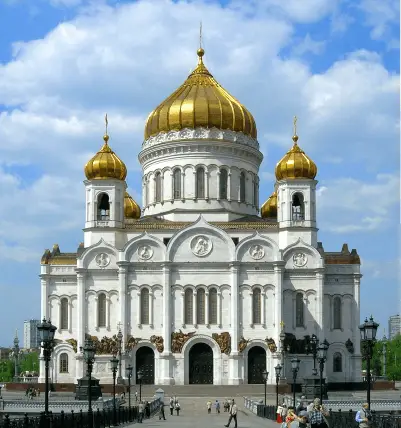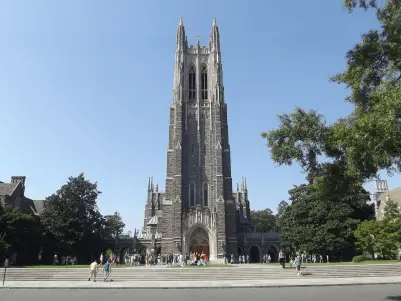Orthodoxy and Protestantism are two of Christendom’s three major divisions. Both started as reactions to theological and political disputes within early Christianity. However, the similarities end there. Although Orthodox and Protestant churches are not entirely uniform across congregations, there are still some major differences that are consistent between the two religions. This article will discuss some of the differences between Orthodoxy and Protestantism.
Summary Table
| Orthodox | Protestant |
| The bread and wine transform into the body and blood of Christ during Eucharist | The Eucharist is merely a symbol of God’s grace |
| Mary and the saints are intercessors between God and man | Only Jesus Christ can serve as a mediator between God and man |
| Only men are ordained to the priesthood | Both men and women are ordained to the priesthood |
| Through the intercession of the Son, the Holy Spirit proceeds only from the Father | The Holy Spirit proceeds from both the Son and the Father |
| Very formal and elaborate Divine Liturgy | Formality and content of worship services vary across denominations |
Definitions
Orthodoxy

Eastern Orthodoxy springs from a line of beliefs that have changed very little since the earliest days of Christianity. In the 11th century, following doctrinal disagreements on the nature of the Holy Spirit (filioque) and the authority of the Bishop of Rome, the Eastern church broke off from its Western counterpart. Eastern Orthodox churches tend to belong to one of many autocephalic churches, meaning their bishops do not report to any higher authority. However, all Eastern Orthodox Churches recognize the Ecumenical Patriarch of Constantinople as the spiritual leader of all Orthodox Christians.
Common Tenets of Orthodox Doctrine
1. The Eucharist is a sacrificial encounter with Jesus Christ; therefore, sins are forgiven through it. The bread and wine change completely into the body and blood of Christ, and only members of the church can partake of both.
2. Orthodox Christians venerate Mary as the Theotokos (God-bearer), as the son she bore was God in human form. Orthodoxy teaches that parents do not transmit the guilt of Adam’s original sin to their children; therefore, Mary was born sinless just like everyone else. After the life of Jesus, Mary died and her body ascended into heaven. She is perpetually a virgin and is first among the saints; thus, she intercedes for Christians. Similarly, other saints can act as intercessors between God and men and may be called upon during prayers.
3. Only males are ordained as priests and bishops. Married men may become priests and deacons, but they cannot marry after ordination. On the other hand, bishops must remain celibate.
4. God is the Father, Son and Holy Spirit. The Holy Spirit proceeds from the Father alone, and is sent by the Father through the intercession of the Son.
5. Worship services tend to be elaborate, with heavy use of sacraments and iconography. The Divine Liturgy, said in either Greek or the vernacular, forms the heart and soul of Orthodoxy.
Protestantism

Protestantism originated in the Protestant Reformation, a movement seeking to reform the perceived errors in the Roman Catholic Church. While there were attempts to reform the Catholic Church prior to the reformation, historians widely accept that the it was Martin Luther who planted the seeds of modern-day Protestantism in 1517. Eager to limit the influence of the Pope, many western European countries adopted Protestantism within decades. Although England broke away from Rome in 1534, its theology and liturgy were still heavily influenced by Catholicism until the 17th century. English settlers carried Protestantism to the Americas, where it is now the dominant religious tradition.
Common Tenets of Protestant Doctrine
Modern Protestantism is composed of a diverse set of denominations, many of which have contradicting doctrines.
1. The Eucharist symbolizes the grace of Christ, and is not sacrificial in nature. While some Protestant denominations believe that the bread and wine change into the body and blood of Christ, most post-Anglican views deny this transformation and view it as symbolic. All Christians who desire to partake of the bread and wine may do so.
2. Mary is a holy woman who was chosen to bear the Son of God. Mary was not conceived without sin, and her body remained on Earth after her death. While she was a virgin at the time of the Nativity, she did not remain a virgin forever. As Protestants believe the Christ is the only mediator between God and Man, they do not believe that Mary acts as an intercessor. In fact, most Protestant denominations deny the existence of saints as a separate class of exalted and venerated human beings. Instead, the term “saint” refers to all Christians, who are constantly being called to imitate Christ.
3. Many Protestant churches ordain women to the clergy; in some cases, women can become bishops or heads of entire denominations. Most Protestant denominations do not require celibacy for members of the clergy.
4. Most Protestants believe in the Trinity – God the Father, God the Son, and the Holy Spirit. The Holy Spirit proceeds from both the Father and the Son.
5. Worship styles vary across Protestant denominations. Spontaneous and exuberant services are a hallmark of Pentecostal, African Methodist Episcopal (A.M.E.) and Southern Baptist churches. Meanwhile, “high church” Anglican and Episcopal churches tend to more traditional, with certain sections keeping Catholic liturgical elements.
Orthodoxy vs Protestantism
So what is the difference between Orthodoxy and Protestantism? They differ in both structure and theology. Some of these differences are discussed below.
Role of the Eucharist
In Orthodoxy, the Holy Spirit transforms the bread and wine during the Eucharist into the body and blood of Jesus Christ. Protestants, in contrast, hold that no such transformation happens, focusing instead on the symbolic nature of the Eucharist.
Mary and the Saints
Orthodox Christians venerate Mary and a host of saints, holding them up as examples of Christian life and as intercessors between God and Man. While Mary played a special role in the life of Jesus, she does not play any intercessory role in the life of Christians. Protestants believe that all Christians are saints.
Clergy and Celibacy
Both Orthodoxy and Protestantism do not place any special emphasis on celibacy as a requirement for priesthood. However, only Orthodox males can be priests; most Protestant denominations allow women to join the clergy.
Trinity
Eastern Orthodox churches and most Protestant sects believe in the doctrine of the Trinity – God the Father, God the Son and God the Holy Spirit. However, they differ in that Orthodoxy holds that the Holy Spirit proceeds only from the Father; Protestants claim that the Holy Spirit proceeds from the Father and the Son.
Liturgy
Orthodox worship revolves around the Divine Liturgy, a centuries-old set of elaborate worship rituals codified by the early saints. In contrast, a diverse set of worship services exist across Protestantism, ranging from traditional Anglican Masses to very exuberant and informal Pentecostal services.
Video
Watch the video below to know more about the difference between Protestant Evangelicalism and Eastern Orthodoxy:






